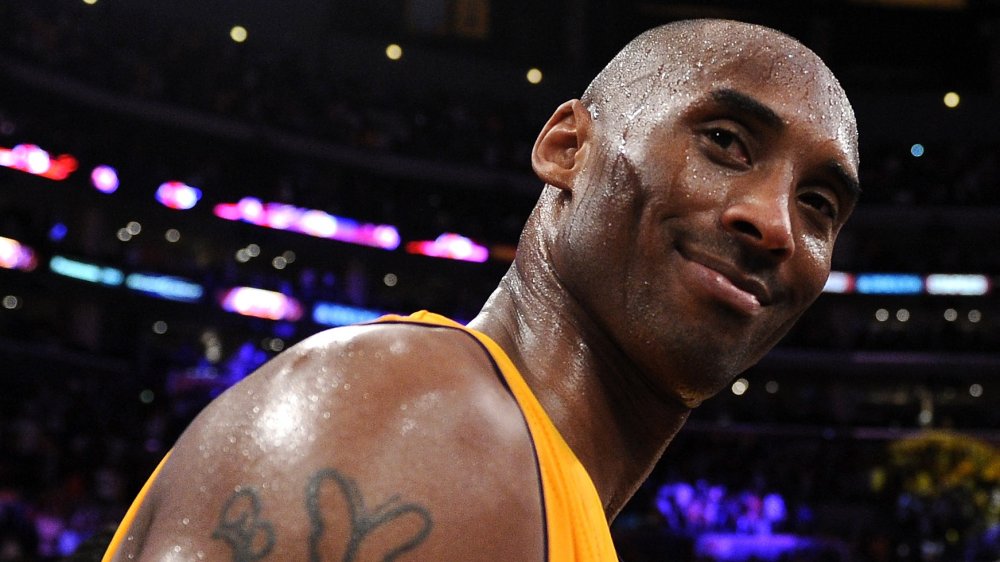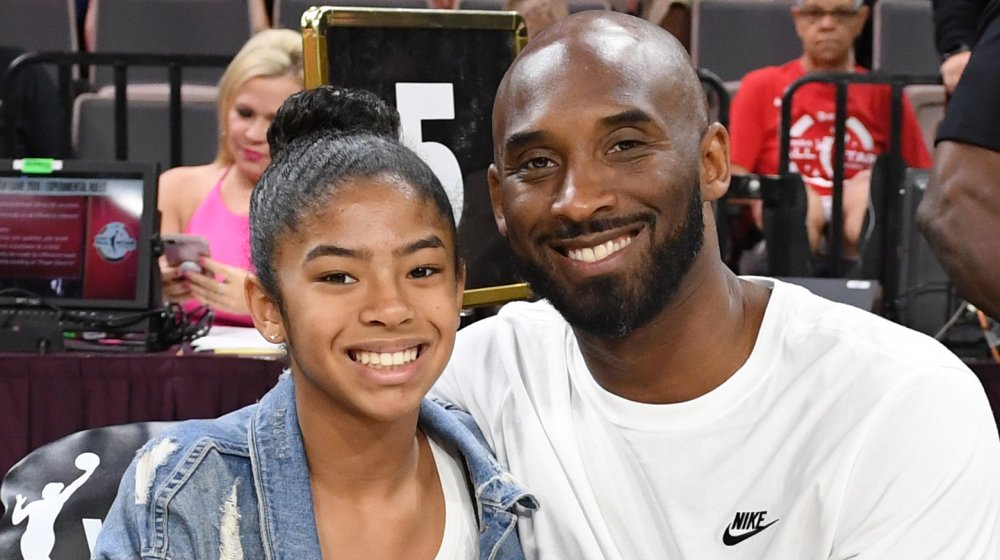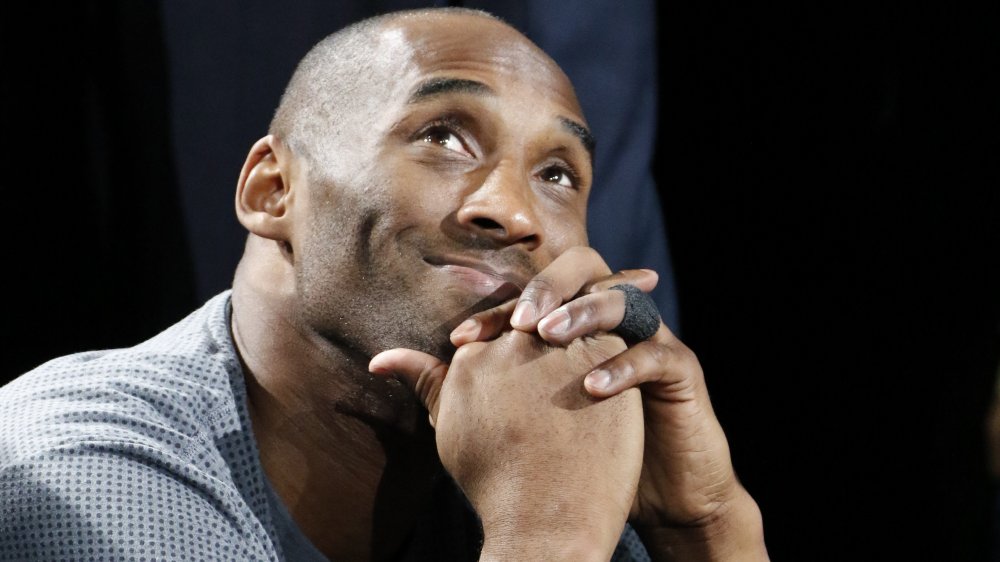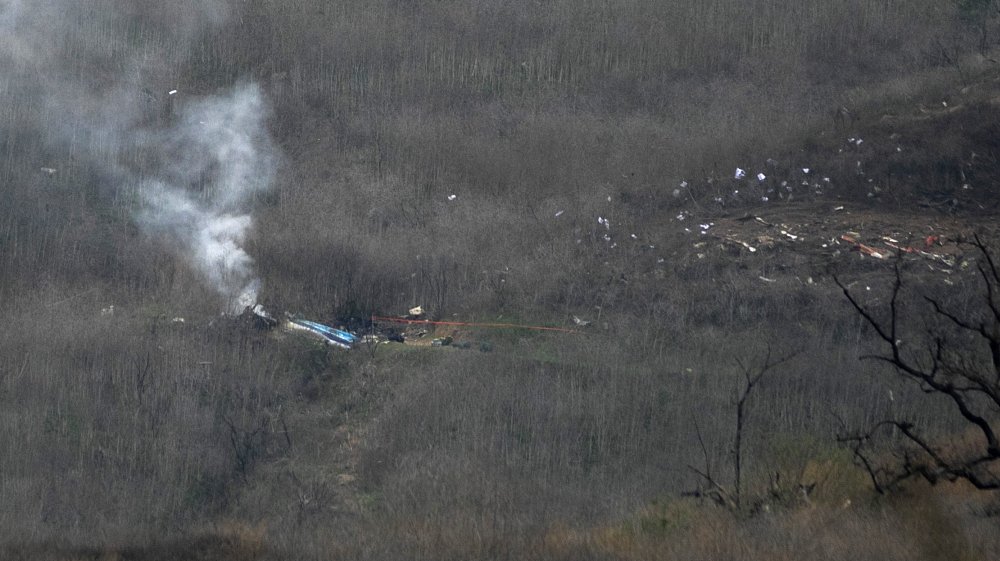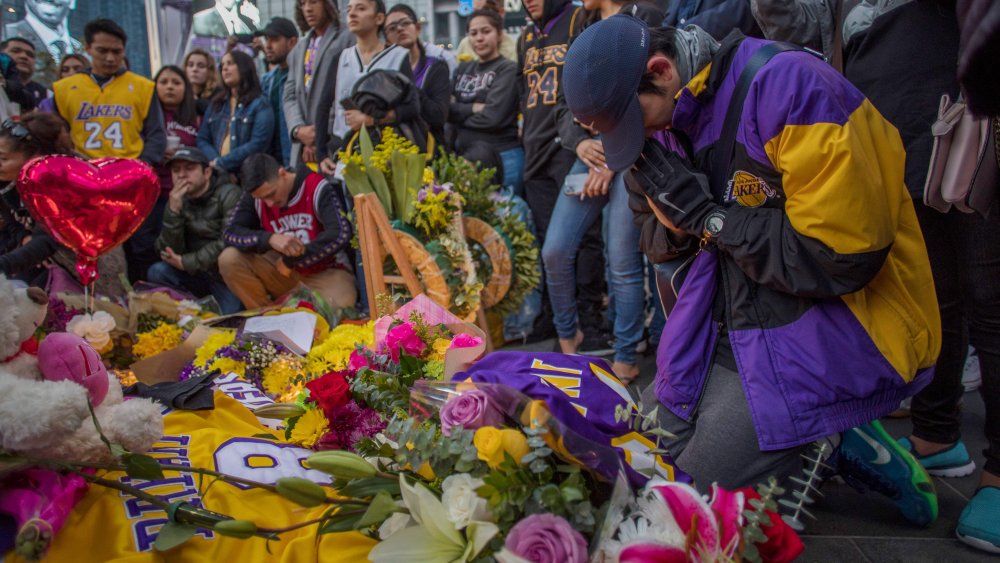The Biggest Unanswered Questions About The Kobe Bryant Helicopter Crash
As the world continues to mourn legendary NBA star Kobe Bryant, his daughter, Gianna, and seven other passengers who died in a helicopter crash on Jan. 26, 2020, it's also left others with questions as to how the accident occurred. The retired basketball player had a long history of flying in helicopters — so, why was that January morning any different?
In fact, Bryant had even made a pact with his wife, Vanessa, about flying in choppers. "He and Vanessa had a deal that they would never fly on a helicopter together," a source told People after the accident, adding that Bryant "only" flew with pilot Ara Zobayan, who was also killed in the crash.
According to Business Insider, the National Transportation Safety Board announced that the helicopter, a Sikorsky S-76, did not have a black box to record audio, meaning that some mysteries regarding the final moments of those involved in the accident will never be discovered. Here are some of the biggest unanswered questions that we have about the Kobe Bryant helicopter crash.
Was there something wrong with Kobe Bryant's helicopter?
The biggest question on everyone's minds is whether or not something was wrong with Kobe Bryant's helicopter on the day of the crash. The chopper, a Sikorsky S-76, is a longtime favorite of the rich and famous. President Donald Trump owns a $7 million customized version of the aircraft.
"The likelihood of a catastrophic twin-engine failure on that aircraft — it just doesn't happen," Bryant's former pilot Kurt Deetz told the Los Angeles Times. Deetz, who "logged more than 1,000 hours with the Sikorsky S-76B," also mentioned that Bryant's chopper was in "fantastic" condition, comparing it to "a Cadillac, a limousine — it's limo-esque." According to Deetz, the aircraft's company, Island Express Helicopters, follows a "very good maintenance program," so was this particular Sikorsky lacking in anything?
According to the National Transportation Safety Board (via The Wall Street Journal), Bryant's bird was missing a terrain awareness warning system (TAWS). The NTSB reportedly called on the FAA in 2006 to issue a requirement that choppers carrying six people or more utilize that system, but according to the New York Post, that technology was only required on air ambulances and other medical helicopters. It was not required on Bryant's aircraft.
Why did Kobe Bryant's group decide to fly that day?
Kobe Bryant loved flying in his helicopter. The retired NBA player used it mostly out of convenience, so he didn't have to sit in traffic. "I had to figure out a way where I could still train and focus on the craft but still not compromise family time," he explained on the Barstool Sports podcast: The Corp With A-Rod and Big Cat. "So that's when I looked into helicopters."
What the public seems to be wondering, however, is why Bryant chose to fly on a day when the weather was bad? Law enforcement officials told TMZ that the weather in Los Angeles was "extremely foggy Sunday morning," to the point that "even LAPD air support was grounded because of it." According to CNN, Bryant's helicopter was reportedly given permission to fly, operating under "special visual flight rules." In a separate report, CNN also noted that at one point during the flight, the pilot asked for a "flight following," although by then, he was reportedly flying too low to receive the radar tracking assistance.
Did a delay pose a problem?
The helicopter that Kobe Bryant and the other victims were on was headed to a familiar destination. In fact, they "had made almost exactly the same trip the day before," according to Business Insider, but the chopper wound up taking an unexpected route on that fatal day.
"About 10 minutes into the flight, Burbank air-traffic control ordered the helicopter to hold because another [aircraft] was landing nearby," Business Insider reported. "The pilot [Ara Zobayan] said he would circle over Glendale and await instruction." Unfortunately, the delay may have forced the pilot to navigate less familiar territory at a time when he was already dealing with bad weather that could have severely limited his visibility.
The Los Angeles Times analyzed flight data and reported the following: "As Zobayan approached the hills of Calabasas at 150 mph, air traffic control radioed him, telling him he was too low to be seen on radar. Four minutes later, the pilot advised he was climbing to avoid a cloud layer. He rose roughly 875 feet in less than a minute and then began a descending turn before slamming into the hillside."
"The last flight data received from the helicopter was at 9:45 a.m., 39 minutes after it took off," reported NPR.
A team of experts and drones is analyzing the aftermath
We may never know all of the tragic details that led to the helicopter crash that killed Kobe Bryant, his daughter, Gianna, and seven others, but experts are trying to better understand the circumstances.
"The National Transportation Safety Board has sent a team to the site and is now leading the investigation," NPR reported, but that team will not have an easy task. "Investigators will have to deal with rugged and elevated terrain," which took firefighters nine minutes to hike due to the "extremely steep" path that leads to the crash site. Some firefighters were even "lowered to the scene from a sheriff's helicopter."
An 18-member NTS team of experts will focus on areas of investigation that range from "operations, human performance, airworthiness, structures, and power plants," per NPR. The team will also analyze the pilot's background and the helicopter's maintenance, ownership, and operating records. The onsite team will be assisted by drones used to map the "wreckage."
The investigation will likely span months, and while the results will provide some clarity, they won't reduce the tragic nature of the situation. "Of course, hindsight is always perfect," said Michael Lenz, a retired safety program analyst with the Federal Aviation Administration, speaking to the Los Angeles Times. "We can say maybe if they had turned around, they would be alive today, but we don't know."
Was it even legal for Kobe Bryant's helicopter to fly that day?
As details continue to emerge around the crash, it now looks like Kobe Bryant's helicopter wasn't legally allowed to fly on that fateful day. According to The New York Times, "the pilot who was struggling to avoid the clouds did not have the legal authority to navigate with his instruments because the aircraft owner did not have the necessary federal certification, according to three sources familiar with the charter helicopter company's operations."
Although the pilot, Ara Zobayan, was certified to fly while using visual flight rules, there are still "limitations on how the [helicopter's] company is approved by the F.A.A. to operate when carrying passengers for hire." Because of that, Zobayan was reportedly "required to fly only in conditions of sufficient visibility to navigate visually." That suggests that should not have taken the craft up in the dense fog.
The New York Times notes that this new information "shed[s] light on the question of why the pilot did not file an instrument flight plan that would have allowed him to climb well above the fog-shrouded hills and head to Camarillo Airport, not far from the basketball tournament where Mr. Bryant and his party were headed."
If The New York Times' sources are accurate, this information poses a troubling question that will remain unanswered. Could this accident have been avoided if all the rules had been followed?

